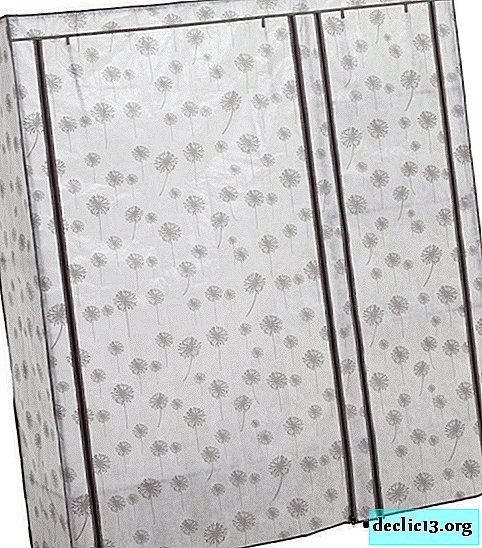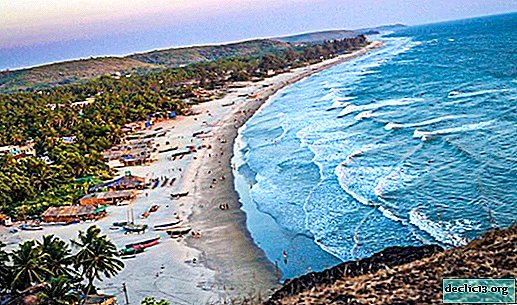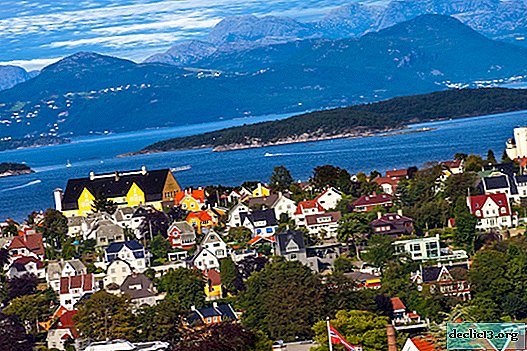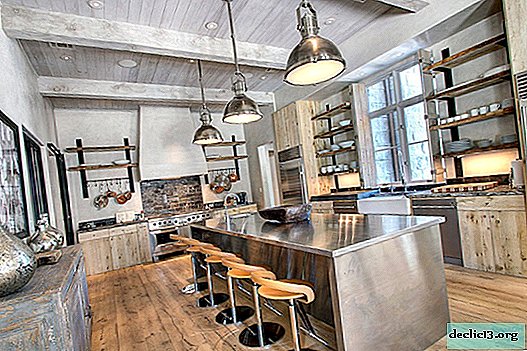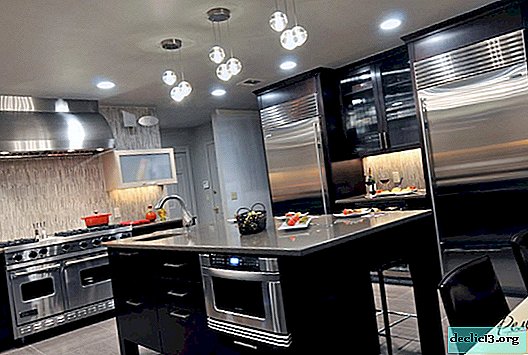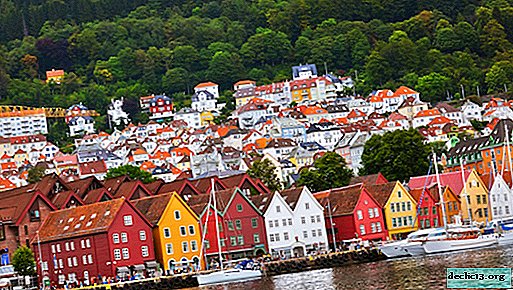Caesarea - City and National Park in Israel
Caesarea (Israel) is a place where modern achievements of science and technology are intertwined with unique ancient inventions, and historical relics and archaeological exhibits are found literally at every step. Add to this the stunning nature and proximity of the Mediterranean Sea, and you will get the perfect holiday destination.
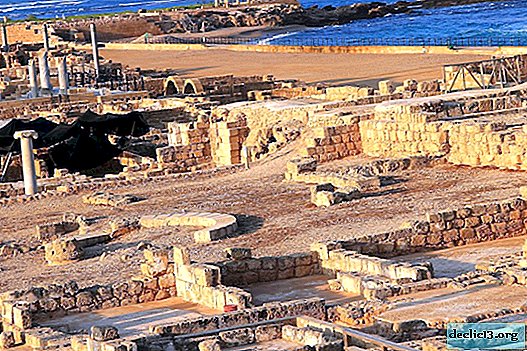
General information

Speaking about Caesarea, some have in mind a small coastal city with excellent infrastructure and a developed industrial zone, while others - the National Park, which has a huge number of unique archaeological finds. And what is remarkable - each of them will be right, because under this name there are two geographical objects at once. The first is an ancient city founded by Herod and attained its greatness during the time of the Roman Empire. The second is a modern settlement, founded in 1977 near the ruins of the main tourist attraction of Israel and located approximately in the middle between Haifa and Tel Aviv.
Another important feature of this park is a fairly common name. The fact is that on the world map you can find several Caesareas at once. This one, which in Hebrew sounds like “Sisaria,” is considered Palestinian or simply seaside.
History reference
 Herod
HerodThe history of Caesarea National Park began in the middle of the 4th century. BC e. from the construction of the Straton Tower, a small Phoenician village in the center of which stood a majestic stone fortress. Over the long years of its existence, the settlement managed to change several owners, until in 31 BC. e. the Roman emperor Augustus did not hand it over to the Jewish king Herod.
Then no one even guessed how fateful this decision would be, because a truly grandiose idea was born in Herod's head. He decided not only to completely rebuild the unremarkable town, but also to make it the largest port in Palestine. The closest entourage of the ruler in every possible way dissuaded him from this venture, because the shallow bay was completely unsuitable for the role chosen for her. However, Herod was adamant - in his dreams, the grandeur and luxury of the former village were not inferior to Rome itself. And, no matter how strange it may sound, the plans of the odious king were destined to be accomplished.
After 10 years, Caesarea turns into a busy sea harbor, then receives the status of the metropolis, and after a while becomes the capital of all Judea.

The further history of this city is quite traditional. It actively developed, becoming the main bastion of culture, science and politics, experienced regular clashes of religious fanatics, discovered new poets, theologians and architects, witnessed the Crusades, as well as numerous uprisings and wars. One of them, which fell in the middle of the 13th century, first led to the fall, and then the complete destruction of the Jewish capital. By 1265, after the invasion of Muslim troops from the majestic port, only ruins remained, which are now included in the list of main attractions of Israel.Find out RATES or book any accommodation using this form
Caesarea National Park
Caesarea's attractions will appeal not only to true history buffs, but also to ordinary tourists who appreciate beautiful places and an unusual atmosphere. We offer you to take a small virtual tour of the park and get acquainted with some of them.
Port
The unique man-made harbor, built on the shores of the Mediterranean Sea at the direction of Herod, was considered one of the most outstanding structures of its time. In order to protect the city from high waves and storms, the then builders came up with Roman concrete. It consisted of stones, pozzolan and lime, which were poured into large forms and poured with sea water. After a while, the mixture completely solidified and turned into a concrete block. It was from them that the port moorings were built, the total length of which exceeded 700 m.

During the heyday of Caesarea, the port was not only a place of stay for merchant ships, but also an important economic center, which brought huge revenue to the state treasury. In size and importance, he could easily compete with Alexandria Harbor. Now it is the most visited attraction, in the territory of which there are many restaurants and souvenir shops.
AqueductIn view of the peculiarities of their geographical location, the inhabitants of Caesarea experienced a constant shortage of fresh water. The solution to this problem belongs to the same Herod, who ordered the construction of a special canal, through which rainwater began to flow into the city. This not only improved the living conditions of its inhabitants, but also contributed to the active development of Caesarea. It began to build baths, sewers, equip the first toilets in Judea.
 Amphitheater
AmphitheaterAn equally important attraction of Caesarea Park in Israel is the ancient Roman theater, which became the first in the Middle East. The remains of this amphitheater, which, incidentally, are perfectly preserved, were found during an archaeological expedition conducted from 1959 to 1964.

The building, designed for 3 thousand spectators, was laid down simultaneously with the port and served the townspeople for at least half a century. Initially, kurkaru, sandstone, covered with a thin layer of plaster, was used for its construction. But after the coming to power of the emperor Septimius Severus, the theater was rebuilt - 3 tiers were added, increasing the number of seats to 5 thousand, and decorated with pilphyr and marble pilasters.

But the main value of this object is a limestone tablet, the inscriptions on which confirm the real existence of the legendary Pontius Pilate. Now an important historical artifact, found only at the end of 1961, is stored in the Israel Museum in Jerusalem. To date, the Caesarea Amphitheater has been fully restored and regularly hosts both Israeli and foreign performers.
The ruins of an ancient palace that served as the residence of King Herod were found on a reef protruding into the Mediterranean Sea. The construction, still impressive with its beauty and grandeur, consists of several tiers of different levels. Its main features are the remains of stone pools used to store drinking water, mosaic floors decorated with geometric patterns, and Roman baths, which are an innovative construction for those times. The best preserved part is the northern part of the palace. This is where his main pride is located - a huge throne room, surrounded by a number of rooms on all three of its sides.
 Hippodrome
HippodromeNo less interesting attraction of Caesarea Park is the Roman hippodrome, from one glance at which it is breathtaking even for a modern person. The facility, located along the coastline and surrounded by stone seats, was the main "cultural and entertainment" center of the time. Horse races were held here, chariot races were organized, criminals were executed, animals were poisoned, and spectacular gladiatorial fights were organized. In general, the program was more than rich.

The territory of the hippodrome is perfectly preserved. Marble paintings and frescoes depicting bloody scenes are still visible on its walls. Moreover, in the northern end of the arena you can see the remains of the gate, from which the participants of the chariot races started.
 Temple of Augustus and Roma
Temple of Augustus and Roma
If you carefully consider the photos of Caesarea dedicated to the central part of the park, you will notice the following historical landmark of Israel. This is a pagan temple, built in honor of the goddess Roma and the emperor Octavian Augustus. The building, surrounded by high walls, has a typical structure for the Hellenistic period - a Roman portico, elements of white marble and rows of props of pillars.
The same sandstone-kurkar served as the material for the construction of this temple, but it was covered with such high-quality and beautiful stucco that no one doubted its luxury and grandeur. Subsequently, the pagan shrine was destroyed, and in its place an octagonal Christian cathedral was built, which existed until the VII century. Then Caesarea was attacked by the Arabs, who once again demolished the walls of the church and built a mosque in its place.
TermsPublic baths, which appeared in the Byzantine era, are a huge complex consisting of several steam rooms and pools with warm and cold water. The floors of the term are decorated with mosaic tiles, which was considered the main value of ancient Caesarea. Before entering the complex, there was a palestra in which local residents went in for sports, attended massage sessions, oiled their bodies with oil, or simply relaxed. And the colored mosaic floor, and the palestra, and even the marble columns surrounding the ancient baths, have survived to this day.

Practical information
Caesarea National Park's opening hours vary by season.
Summer:
- Sun-Thu and Sat - from 8 am to 5 pm;
- Fri and holidays - from 8am to 4pm.

Winter:
- Sun-Thu and Sat - from 8 am to 4 pm;
- Fri and holidays - from 8 am to 3 days.
On the eve of the holidays - from 8 a.m. to 1 p.m.
Ticket price:
- Adult - 39 ILS;
- Children - 24 ILS;
- Adult group - 33 ILS;
- Children's group - 20 ILS;
- Student - 33 ILS;
- On a pension certificate - 20 ILS.

For those who plan to get acquainted with the sights of the park within a few days, we recommend buying a tourist card (Money Saving Tickets):
- Blue (3 visits) - 78 ILS;
- Green (6 visits) - 110 ILS;
- Orange (unlimited) - 150 ILS.
Compare accommodation prices using this formOn a note! Cards are valid for 2 weeks from the date of activation. The cost is the same for representatives of all ages. Get the latest information on the official website of Caesarea National Park - www.parks.org.il/en/reserve-park/caesarea-national-park/
Useful Tips
Before you go on a sightseeing tour of Caesarea, check out the tips of experienced tourists:

- Israel is quite hot - even in late autumn the air temperature reaches + 32 ° C. In addition, there are practically no trees in the park, which means there is no shadow there either. That is why the best time to visit it is early morning and hours before closing;
- Do not spare money for the services of a guide - with him the tour will become much more interesting;
- In addition, you can take an informational brochure at the entrance or order a paid viewing of a documentary film (available in Russian);
- Take care of comfortable clothes and sports shoes - you will have to walk a lot;
- The greatest impression on tourists is made by concerts in the ancient theater. As a rule, they are held in the late evening, which allows you to not only listen to the performances of world celebrities, but also enjoy beautiful sunsets.
Caesarea (Israel) is a place worthy of the attention of any tourist who comes to the Holy Land. Be sure to visit the park and enjoy its atmosphere.


